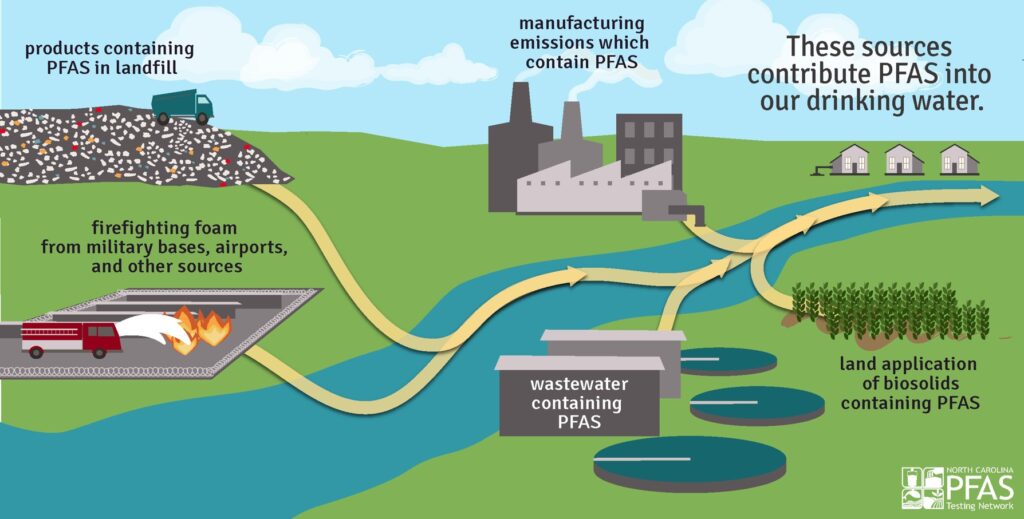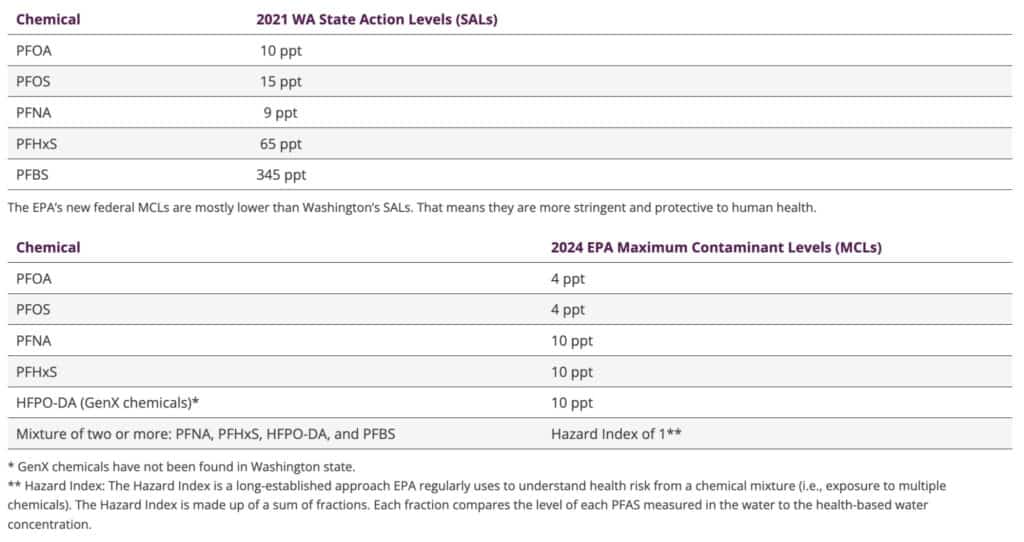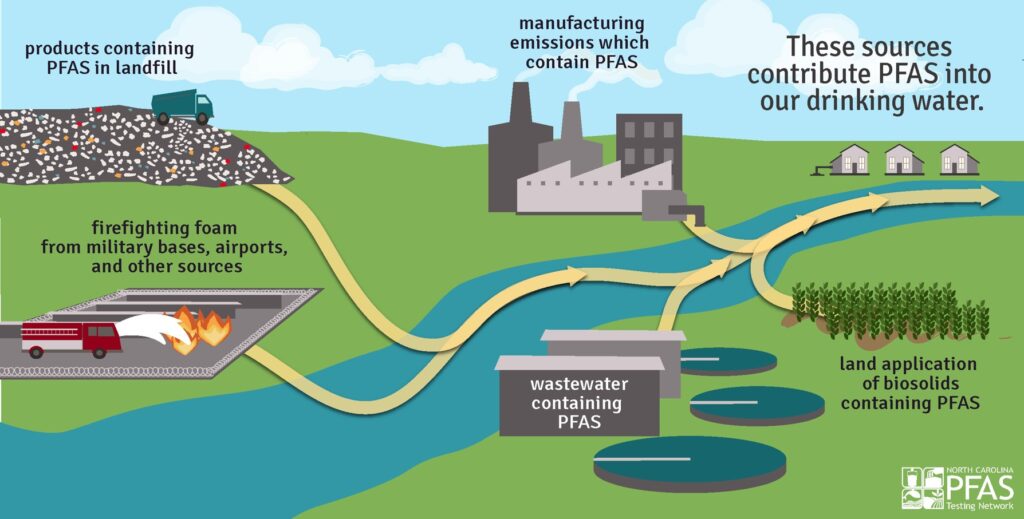As PFAS (“forever chemicals”) continue to make headlines across the country, Washington State is taking important steps to monitor and regulate these substances in drinking water. Recent test results in Kennewick have brought these concerns closer to home and raised questions from both families and business owners about what PFAS are, how they affect health, and what proactive steps can be taken to reduce exposure.
At Paradise Bottled Water, we’re committed to keeping our community informed and protected. Here’s what you need to know.
What Are PFAS?
PFAS (per- and polyfluoroalkyl substances) are a group of manmade chemicals used in thousands of products due to their resistance to heat, oil, stains, grease, and water. These chemicals are incredibly durable—earning them the nickname “forever chemicals.”
Over time, PFAS can build up in soil, water, wildlife, and even the human body, making their way into drinking water sources through many everyday activities and industrial processes.
Where do PFAS come from?
This helpful diagram from the Washington State Department of Health shows some of the most common sources that contribute to PFAS in the environment:

As you can see, PFAS can be released from:
- Firefighting foam
- Wastewater treatment plants
- Landfills and biosolids
- Industrial facilities
- Consumer product runoff
This is why it’s so important to have clean, properly filtered water—especially in areas where PFAS have been detected.
Washington State’s Response to PFAS
Washington is one of the first states to implement State Action Levels (SALs) for PFAS in drinking water. These thresholds set enforceable limits for specific PFAS compounds, including PFOS and PFOA, and aim to protect public health, particularly for vulnerable populations.
In March 2025, the City of Kennewick reported a PFOS result of 16.7 ppt, exceeding the SAL of 15 ppt. This triggered increased monitoring and treatment planning.
If you’re curious about the broader regulatory landscape in Washington, Toxic-Free Future outlines recent state-level PFAS actions, including bans and upcoming compliance deadlines.

What Does This Mean for Families?
While there’s no mandatory action required for residents, the Washington State Department of Health encourages people, especially pregnant individuals, those with infants, and immunocompromised individuals to consider using an alternative drinking water source.
Tips for families:
- Use bottled water for drinking and preparing infant formula
- Stay informed about your community’s water testing results
- Avoid boiling tap water to remove PFAS, it may concentrate the chemicals further
- Explore ways to reduce exposure through DOH-recommended practices
For broader public context, Cascade PBS recently published a compelling piece on the risks of PFAS contamination in Washington well water and how it can affect health long-term.
What This Means for Businesses
If you’re a local business owner—especially in industries like food service, healthcare, or fitness: providing safe, trusted hydration for your staff and customers is more important than ever.
Why it matters:
- Employers must provide access to cool, clean drinking water
- Health-conscious customers and employees are increasingly aware of water quality
- Reliable water delivery can offer peace of mind and compliance support
For a business perspective, the Washington State Association of Counties provides a breakdown of PFAS impacts on infrastructure, risk management, and community health.
How Paradise Bottled Water Reduces PFAS Exposure
At Paradise Bottled Water, we use a vapor distillation process proven to remove contaminants like PFAS and ensure safe, purified drinking water. Here’s how we protect your hydration:
- Vapor Distillation – Converts water to steam, leaving contaminants behind
- Reverse Osmosis Pre-Filtration – Reduces minerals, metals, and sediment
- FDA-Regulated Standards – Unlike municipal water (regulated by the EPA), bottled water is held to FDA drinking water standards
Whether you’re a concerned parent or a business manager, we’re proud to deliver peace of mind in every bottle.
Learn More
Want to understand more about PFAS and how to reduce your exposure? Read our in-depth blog:
Understanding the Risks of PFAS: Protecting Your Health and Environment
Looking for local updates?
PFAS in Kennewick: How Paradise Bottled Water Helps You Stay Safe
Final Thoughts
The detection of PFAS in Kennewick’s water supply has raised new questions, but also new opportunities to take control of your health and hydration. At Paradise Bottled Water, we’re proud to serve our community with safe, vapor-distilled water and transparent answers.
Call us at 509-783-0253 or visit paradisebottledwater.com to schedule service or learn more.



